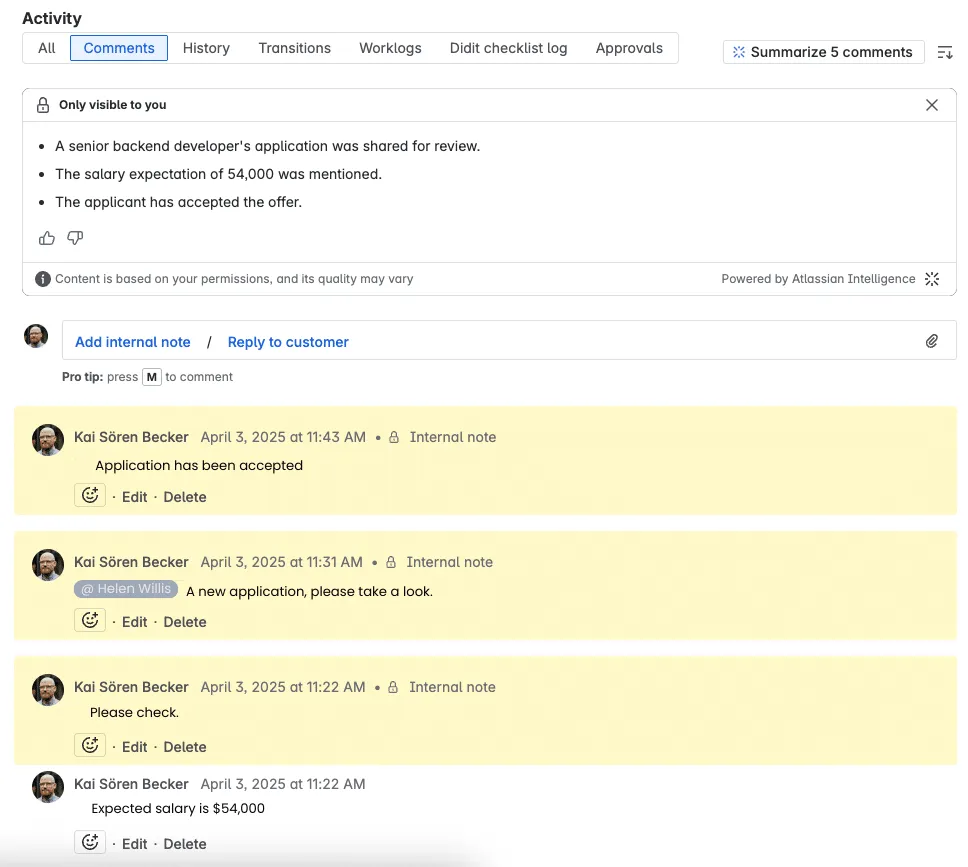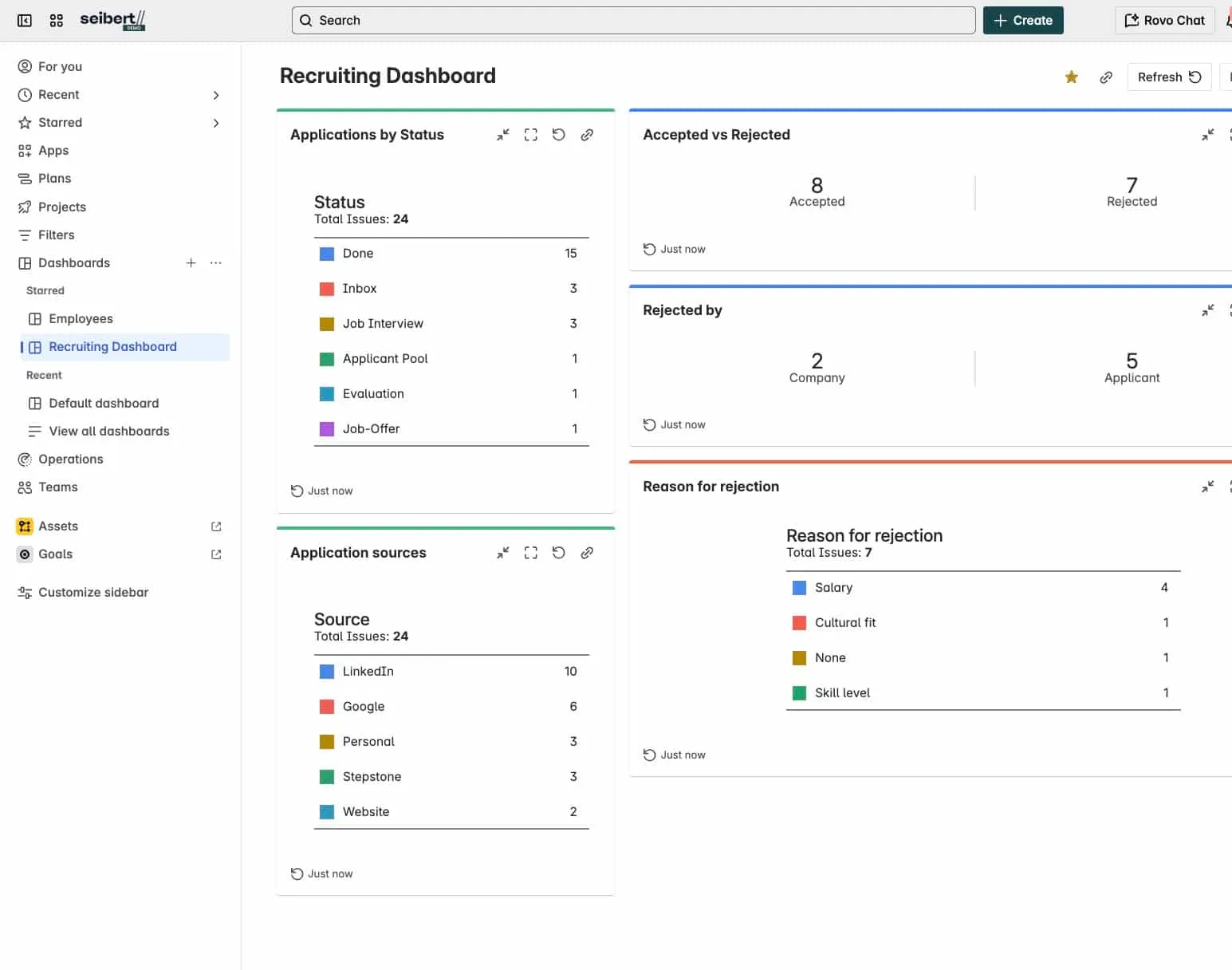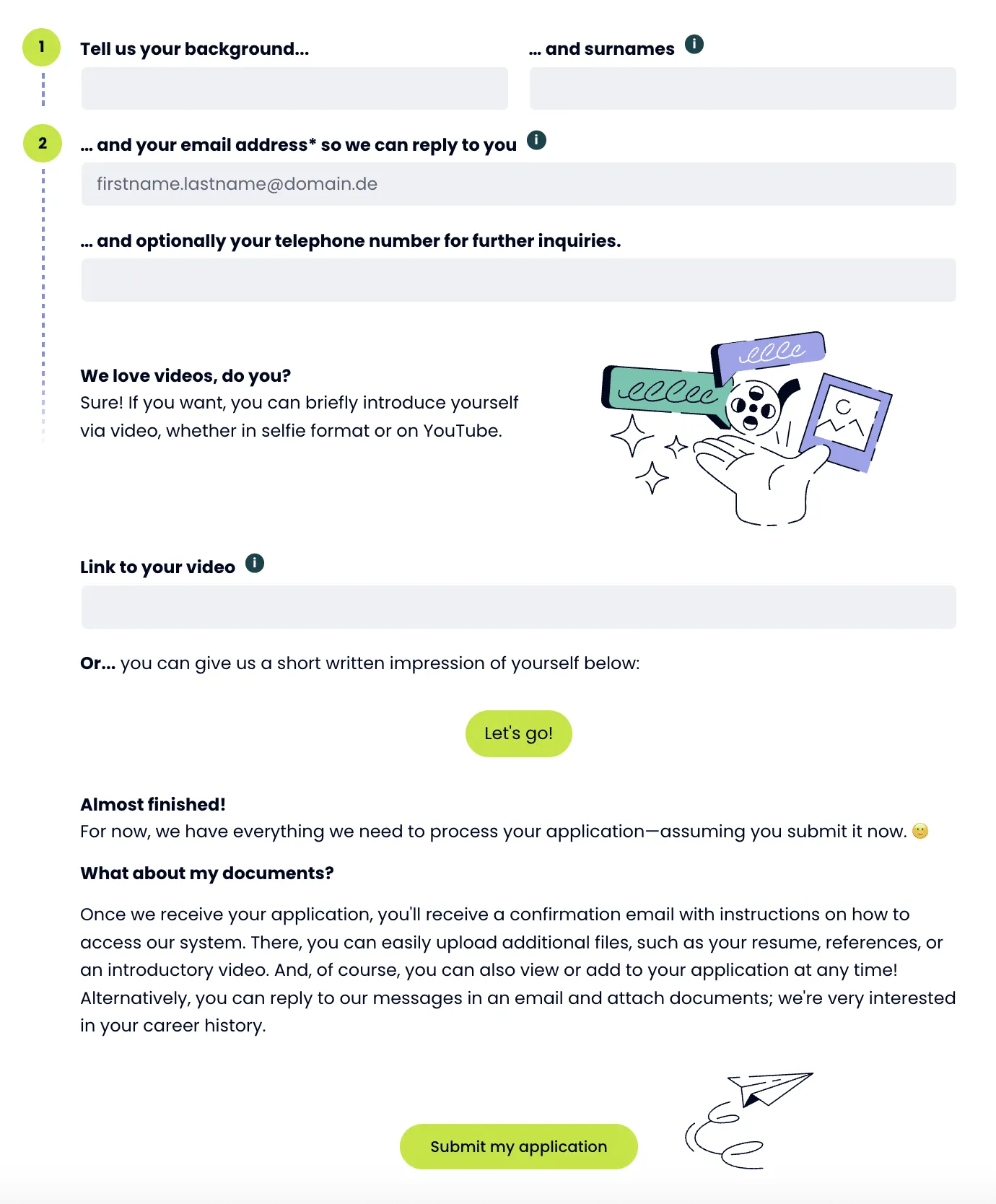The burning question: How does an Applicant Tracking System (ATS) help an HR manager or team?
In today’s competitive talent market, HR teams must move fast, but recruiting is rarely simple. From sourcing and screening to onboarding, the process is often slowed down by disjointed tools, inconsistent communication, and unstructured workflows.
Many turn to ATS solutions to address this issue, but standalone systems often introduce new hurdles, including added costs, steep learning curves, and integration challenges.
Here’s the good news: If your organization already uses the Atlassian ecosystem, you can transform Jira Service Management (JSM) into a robust, cost-effective ATS — without adding another platform to your tech stack.
In this article, we’ll explore how HR teams can utilize JSM to streamline recruitment and highlight a real-world use case that demonstrates JSM in action.
The Solution: JSM as an HR Application Tracking System
Jira Service Management for HR is a valuable tool for managing applications. It can also track applications effectively. The key features of JSM include a centralized hub, automation capabilities, structured communication, and KPI analyzing tools.
By using these key features, your HR team can avoid many problems in the hiring process. An ATS reduces the time it takes to hire and helps secure top talent more effectively ensuring nothing falls through the cracks.
Advantage of Using an Existing Tech Stack for ATS Functionality
JSM as a Human Resource ATS is the smart way to improve recruitment if your company is already part of the Atlassian ecosystem! It just makes sense (it helps even if your company isn’t even in the Atlassian ecosystem.). JSM helps streamline processes without adding costly new tools to the tech stack.
- Cost-Efficiency If your company is integrated into the Atlassian ecosystem, they will likely already use JSM for IT support, operations, or customer service workflows. Using JSM minimises the cost of onboarding new tools while maximizing ROI on your existing software investment.
- Ease of Integration & Unified Ecosystem Tools within the Atlassian suite, like Jira, Confluence, and Trello, integrate seamlessly with JSM, allowing for a smooth flow of information. This ensures teams working on recruitment have everything they need at their fingertips. For instance, you could connect candidate information in Jira to documentation or checklists stored in Confluence for onboarding.
- Minimal Training Curve If your organization already uses JSM, employees are likely familiar with its interface and functionalities. Transforming it into an ATS doesn’t require extensive retraining, saving time and ensuring faster adoption.

Example: HR recruitment workflow, Source: Seibert Group
JSM Features That Enhance Your Recruitment Process
There are several features of JSM used to create an effective and efficient Application Tracking system including a central hub, automatic workflows, structured communication, security, KPI analysis, and customization and integration.
Central Hub for Recruiting
JSM is the command center for all your recruitment activities, offering a centralized overview of job openings and applicants. Key benefits include:
- Visualizing all hiring processes at a glance: Monitor the statuses of every job opening, from new applications to filled positions, in a single dashboard.
- Tailored workflows that adapt to your process: Customize workflows to match your specific recruitment pipeline stages, such as HR Screening, Interviewing, and Hiring.
- Live updates for stakeholders: Intuitive dashboards ensure hiring teams stay informed in real-time, reducing miscommunication and delays.
This centralized hub ensures everyone operates from a single source of truth, eliminating the risk of oversight or misaligned expectations.
Standardized Processes with Automation
![]()
Example: automated ticket creation in Jira, Source: Seibert Group
Recruiting involves countless repetitive tasks that can be prone to delays and inconsistencies when handled manually. JSM’s automation features solve this by handling tasks like:
- Automated ticket creation: Each candidate application is converted into a Jira ticket, complete with relevant data such as the applicant’s résumé, the job applied for, and the stage in the process. Tickets are categorized and automatically assigned to the responsible recruiter.
- Timely Notifications for Candidates and Employees: Keep candidates informed with automated updates—confirm application receipts, notify them of interview schedules, or share outcomes without manual follow-ups.
- Customized Automated Workflows: Configure hiring workflows to standardize steps like resume screening, panel feedback collection, and offer generation. Automatic transitions ensure consistency while eliminating repetitive data entry.
This process standardization saves valuable time while fostering consistency, compliance, and better candidate experience.
Structured Communication

Example: Maintaining interaction log (internal and to customer) and an AI summary feature. Source: Seibert Group
Effective recruitment hinges on seamless communication, both with candidates and among hiring teams. JSM brings structure and clarity to every interaction by:
- Maintaining Interaction Logs: A detailed history of communication—emails, feedback, and updates—linked directly to the candidate’s application ticket. Plus, with AI built-in capabilities, you can get a summary of the interaction and comments. This ensures transparency and reduces the need to dig through inboxes.
- Candidate Portals: Accessible self-service portals let candidates track their application progress, ask questions, and respond to recruiter requests in real-time.
- Team Collaboration Made Easy: Facilitate internal discussions within JSM tickets by tagging stakeholders, attaching files, or adding notes. This ensures faster, more informed hiring decisions.
By centralizing communication, JSM eliminates scattered email chains and fosters transparency for both candidates and hiring teams.
Controlled Access for Data Security
Recruitment involves handling sensitive candidate information. With JSM’s access management:
- Role-Based Access Control: Define permissions based on roles—only HR personnel can view sensitive applicant details while hiring managers see relevant evaluation criteria.
- Data Protection Compliance: JSM workflows are designed with regulations like GDPR in mind, safeguarding candidate data throughout the hiring process.
- Restricted Information Visibility: Limit access to private data (e.g., salary discussions or background check results) based on workflow stages or user roles.
This ensures seamless collaboration without compromising candidate privacy.
Easy Reporting and KPI analysis

Example: Recruitment Dashboard with critical Key Performance Indicators (KPIs), Source: Seibert Group US
JSM provides HR teams with actionable insights into recruitment performance. Use visual dashboards and reports to track critical KPIs, such as:
- Time to Hire: Measure the total duration from posting a job to making an offer.
- Application Volume: Identify trends in application submissions across sources like job boards or referrals.
- Reasons for Rejection: Analyze common rejection reasons to refine sourcing strategies or adjust role requirements.
- Applicant Sources: Understand which platforms bring the best talent and optimize investments accordingly.
Real-time metrics empower HR teams to refine processes, ensuring continuous improvement in recruitment strategies.
Customization and Integration

Example: Multisource Integration (Application imported from Corporate Job Application webpage), Source: Seibert Group
JSM is flexible enough to accommodate your unique hiring processes:
- Custom workflows: Tailor workflows to align with the organization’s recruitment needs.
- Multi-source integration: Import applications from various sources, such as job boards or career websites.
- Scalability: Adapt processes as your company grows.
- Integration: You can integrate Jira with third-party applications such as Twilio and DocuSign. These integrations are possible through webhooks and dedicated APIs that interact with Jira.
How Seibert Uses Jira for Recruitment and Application Tracking
At Seibert, our HR team leverages Jira Service Management (JSM) as a powerful Applicant Tracking System (ATS) that simplifies and optimizes the entire recruitment lifecycle. This innovative solution allows our HR department to manage every phase of candidate application management efficiently, ensuring a seamless process for both employees and candidates. Here’s how it works:
- Setting Up the Recruitment Project
- Seibert configures a dedicated JSM project tailored to recruitment. The HR team can use JSM to assign roles and permissions, granting the hiring team appropriate access to collaborate on recruitment tasks.
- Candidate Application Submission
- Candidates use the JSM portal to submit their applications, creating recruitment requests automatically. These requests are transitioned to the “HR Screening” phase, initiating the evaluation process.
- How to Use JSM as Your HR Application Tracking System
- HR screen submitted applications directly in JSM, ensuring candidates meet predefined minimum requirements.
- Candidates who fail to meet standards are transitioned to “Rejected,” triggering an automated rejection email.
- Shortlisting for Interviews
- Qualified applications are transitioned to “Interviewing,” and relevant interview forms are added automatically to ensure structured evaluations.
- Teams can review resumes to prepare for interviews.
- Conducting Interviews
- Panel members document feedback on interview forms directly integrated within JSM. This enables real-time updates and centralized feedback to support team decisions.
- Making Decisions
- Preferred candidates are moved to “Due Diligence” with reference check forms.
- Runner-up candidates can be held at this stage for future consideration while decisions are finalized.
- Issuing Offers
- Once a decision is made, JSM generates offer letters in PDF format automatically, transitioning candidates to the “Pending Acceptance” phase. A “Decline Letter” can also be automatically generated for candidates who were not chosen.
- Completing the Process
- Once the preferred candidate accepts, the issue transitions to “Hired,” completing the recruitment process closing the loop on a streamlined, fully-managed hiring process.
By using JSM as an ATS, our HR team maintains clear communication and accounts for every detail of the candidate journey.
The Advantage of Using JSM as a Human Resource ATS
At Seibert, we proudly use Jira Service Management (JSM) as our ATS because it delivers powerful functionality while supporting logical workflows and transparent processes—values we hold core to our business.
With features like conditional logic in application forms, HR teams can collect exactly the information they need, whether it’s a résumé upload or detailed work history. Submissions are locked upon completion, protecting the integrity of the evaluation process and preventing last-minute changes.
JSM also supports multiple evaluation forms, enabling collaborative feedback from interview panels, and allows applications to be marked as “parked”—keeping strong candidates in the pipeline for future opportunities. Together, these features simplify recruitment management while ensuring a smooth, professional candidate experience.
Ready to set up JSM for recruitment? We’ll help you configure Jira Service Management as a custom ATS, streamline your hiring workflows, and improve the way you attract and manage talent, using tools you already trust.
